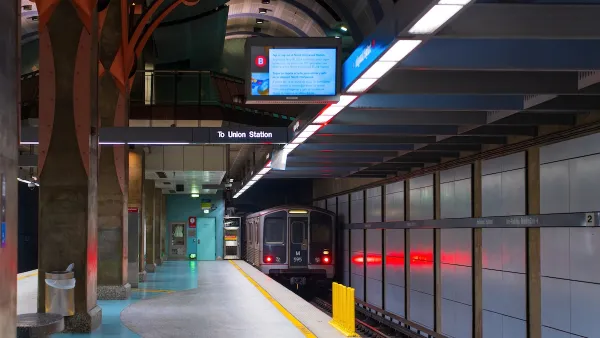For years, the Watts Towers have suffered from problems small and large: bits of decorative glass and pottery falling to the ground; cracks snaking their way through the structures and growing longer over time. A new effort aims for lasting fixes.
The Watts Towers, 17 interconnected sculptures completed by Los Angeles construction worker and artist Simon Rodia in 1954, were once the subject of a city demolition order, but are now an important cultural landmark in a struggling neighborhood.
Two years ago, Los Angeles’ Department of Cultural Affairs hired the Los Angeles County Museum of Art to maintain the sculptures. Last December, UCLA engineers joined the repair team to perform a series of structural tests.
The information gleaned from an extensive study of the Watts Towers, those involved hope, may inform preservation efforts elsewhere, reports . Thanks to sensors planted on the sculptures, the UCLA team was able to verify that the towers are in constant motion, shifting with the wind and even with the time of day. This flexibility kept the Watts Towers standing during the 1994 earthquake. It also means that repairs to the structures must bear movement in mind.
“My diagnosis of the past failures is that they repaired the cracks with a very rigid material,” Frank Preusser, a conservation scientist for LACMA said. “And they used five or six materials, but they were all rigid because they were only thinking about corrosion.”
As for the relevance of the Watts Towers research to other projects, Preusser added, “We are possibly breaking ground here. There are a number of similar structures, but not that tall. They all pose the same problems, and interestingly enough, all of them are looking at us now.”
FULL STORY: Engineers, conservationists work on lasting fix for Watts Towers

Planetizen Federal Action Tracker
A weekly monitor of how Trump’s orders and actions are impacting planners and planning in America.

Maui's Vacation Rental Debate Turns Ugly
Verbal attacks, misinformation campaigns and fistfights plague a high-stakes debate to convert thousands of vacation rentals into long-term housing.

Restaurant Patios Were a Pandemic Win — Why Were They so Hard to Keep?
Social distancing requirements and changes in travel patterns prompted cities to pilot new uses for street and sidewalk space. Then it got complicated.

Charlottesville Temporarily Has No Zoning Code
A judge ordered the Virginia city to throw out its newly revised zoning code, leaving permitting for new development in legal limbo.

In California Battle of Housing vs. Environment, Housing Just Won
A new state law significantly limits the power of CEQA, an environmental review law that served as a powerful tool for blocking new development.

Boulder Eliminates Parking Minimums Citywide
Officials estimate the cost of building a single underground parking space at up to $100,000.
Urban Design for Planners 1: Software Tools
This six-course series explores essential urban design concepts using open source software and equips planners with the tools they need to participate fully in the urban design process.
Planning for Universal Design
Learn the tools for implementing Universal Design in planning regulations.
Heyer Gruel & Associates PA
JM Goldson LLC
Custer County Colorado
City of Camden Redevelopment Agency
City of Astoria
Transportation Research & Education Center (TREC) at Portland State University
Jefferson Parish Government
Camden Redevelopment Agency
City of Claremont




























